The crisis isn’t over
Ten years ago, it was a banking crisis, but it became a political one. That crisis never ended.
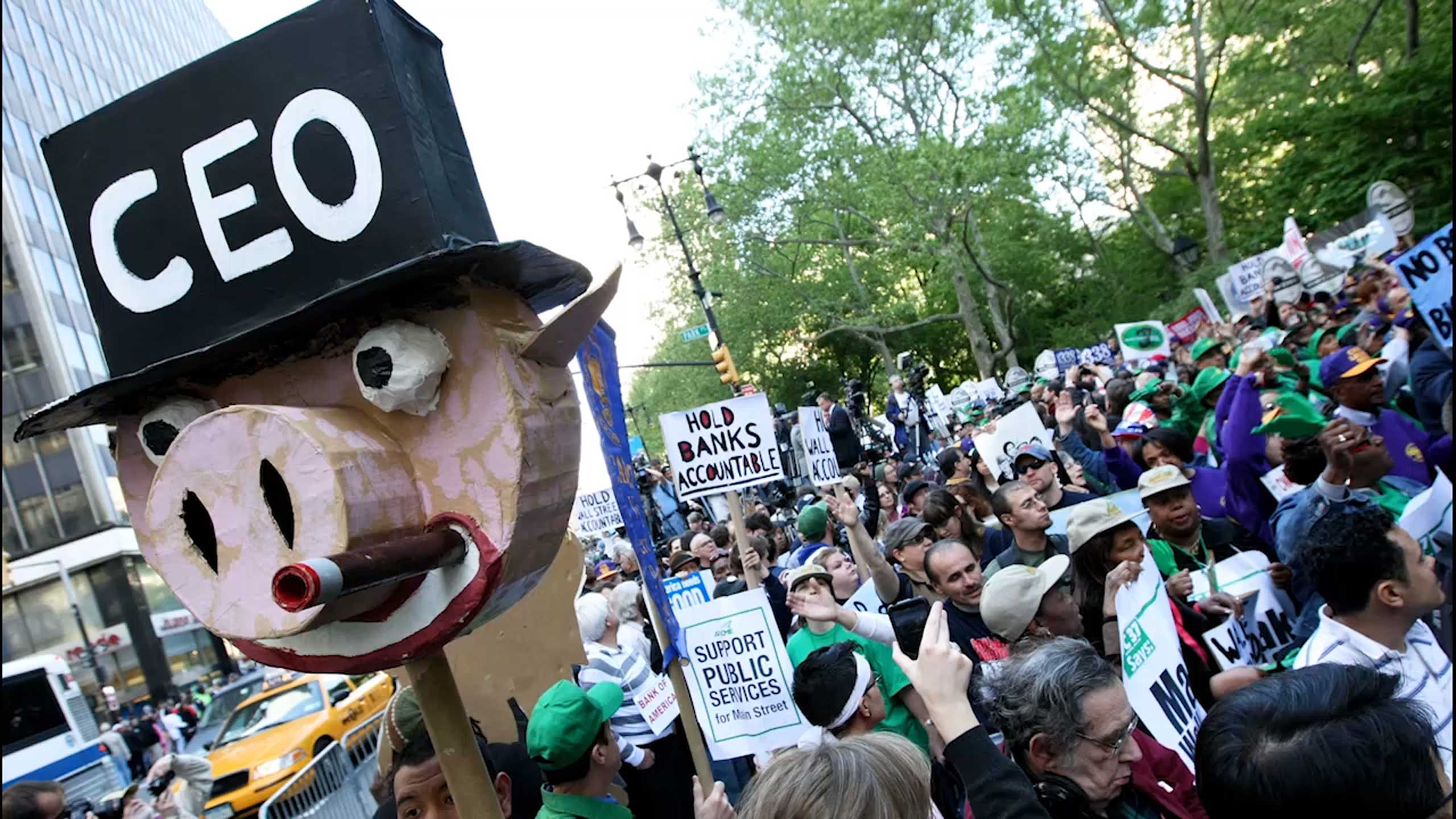
The crisis isn’t over
Ten years ago, it was a banking crisis, but it became a political one. That crisis never ended.

By Victoria Finkle
Ten years after the financial crisis, the regulatory pendulum has swung in banks’ direction.
The economy is humming, new laws rolling back taxes and bank rules have been enacted, and there’s a deregulatory shift underway across the Trump administration.
It can almost start to seem like business as usual again in Washington.
“The banks have their swagger back,” said Neel Kashkari, president of the Federal Reserve Bank of Minneapolis.
But scratch beneath the surface and the crisis remains surprisingly relevant in the national political debate today — and the memory of the damage it did poses a greater threat than many bankers would like to admit.
The crisis played an outsized role in creating a divided and polarized Washington D.C. It helped push both parties further to the extremes, overturned the compromise-and-consensus playbook on financial issues and left the banking system vulnerable to much wider swings of the policy pendulum. The populist forces unleashed by the crisis are still at large in both political parties, and banks remain a primary target.
Moreover, policymakers appear increasingly ill-equipped to tackle the big financial issues. Fannie Mae and Freddie Mac, the two biggest players in the housing market, have spent almost a decade in limbo at the hands of the government, while broader discussions about ways to fundamentally restructure the banking industry have largely been put on hold.
Some fear that the banking industry’s recent victories — the passage of regulatory reform legislation and proposed deregulatory efforts by Trump officials — could even come back to haunt it at a time when there are rumblings that the economy could be headed for another downturn.
“These changes are significant, and nobody is really looking at the cumulative effect and what else is coming down the road,” said Sheila Bair, who chaired the Federal Deposit Insurance Corp. during the crisis. “The timing on this is terrible — we haven't even tested these reforms through a cycle.”
As the financial crisis reaches its tenth anniversary, should bankers really be celebrating?
In 2008, Treasury Secretary Hank Paulson had to convince a skeptical Congress to support a massive $700 billion bailout package to save the financial system. The consequences of that vote are still being felt.
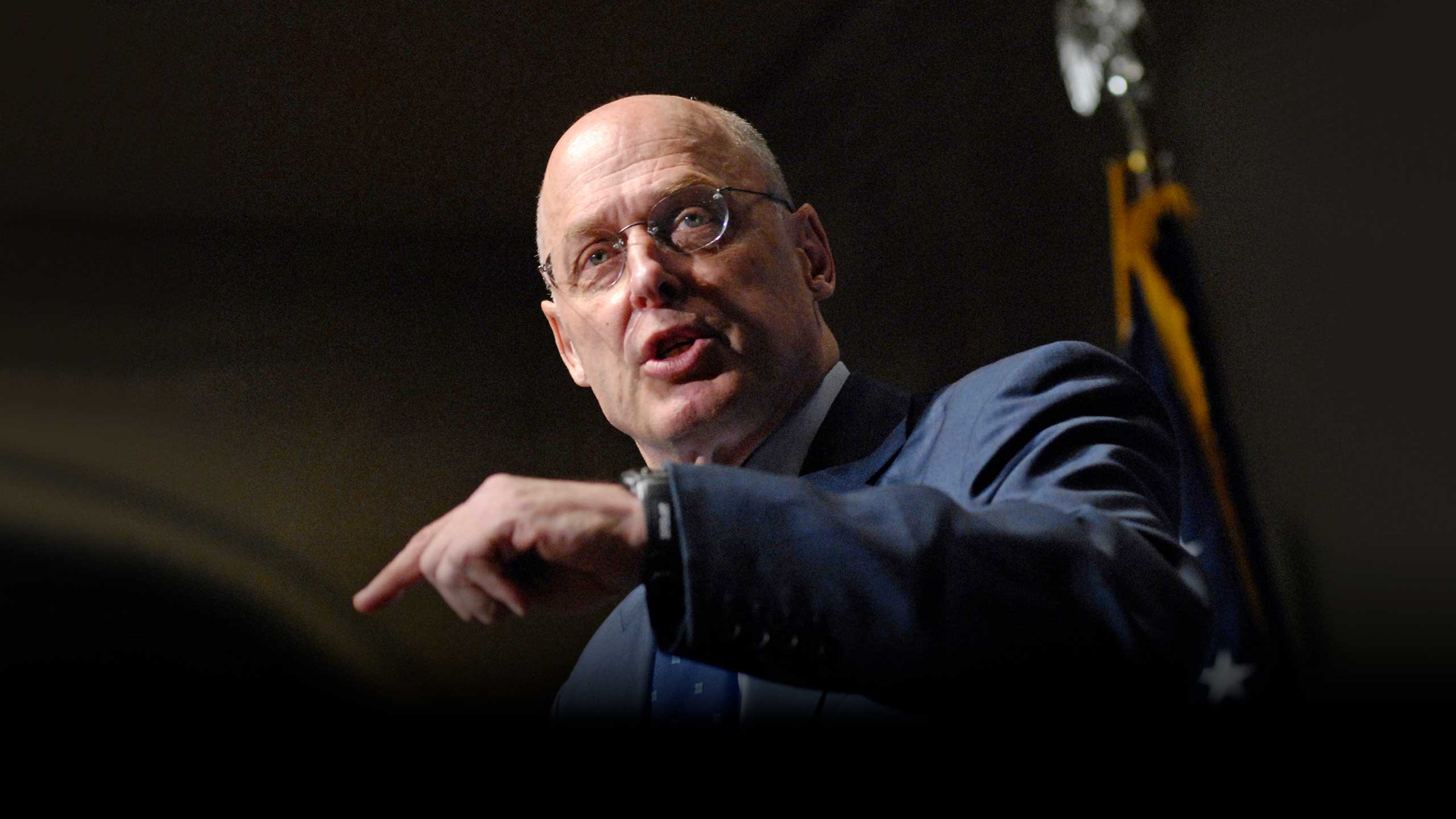
Breaking point
When then-Treasury Secretary Hank Paulson walked into a meeting with Democrats in late September 2008, he was so desperate for a deal that he got down on one knee and literally begged House Speaker Nancy Pelosi not to walk away from an agreement.
It was the height of the financial panic, following the collapse of Lehman Brothers and the near-failure of American International Group, and Paulson had come up with a radical plan — a massive $700 billion bank bailout designed to help the government buy toxic assets from banks and stabilize the system.
It was a huge ask, so politically unpopular that many Republicans turned against their own president to reject it. The first attempt to pass it unexpectedly failed in the House, sending the Dow plunging by more than 700 points and further fanning the flames of the crisis.
Only with continued coaxing from Paulson, the president and others did Congress ultimately approve a revised version of what became the Troubled Asset Relief Program a few days later.
This was a turning point in the crisis. But it also marked something else as well, something not understood at the time that would reverberate for the next decade — the beginning of the end for the old political order.
From the outset, TARP was seen as deeply unfair. Here was the government bailing out the banks, even as regular people suffered the effects of an economy in freefall and a devastated housing market.
“You take the fact that over the last 30 years people in the middle-income categories haven’t seen the kind of gains that they would have expected to have seen, and then they see these banks with a $700 billion bailout package put together,” said Sen. Bob Corker, R-Tenn. “That created in itself tremendous resentment in our nation. And it’s still there, right? We’re seeing it play out in elections.”
While the banking system has largely rebounded from the depths of the crash, the economic recovery has been uneven. Banks are reporting record profits and the stock market is soaring. Yet for vast swaths of the country, wages have continued to stagnate.
The gap between the rich and everybody else has also widened. The richest 1% of Americans now control nearly 40% of the country’s wealth, while the next 9% control nearly the same amount. The vast majority of Americans, meanwhile, have watched their share fall since the crisis — the bottom 90% held slightly more than 20% of total wealth in 2016, down from roughly 30% in the early 2000s.
Put simply, the financial crisis cost the country trillions of dollars in economic damage, but in the years since, the wealthy have enjoyed the biggest gains.
This disparity has helped to fuel a broad antipathy towards Wall Street and the political system that propped it up, anger that has given rise to the Tea Party and Donald Trump on the right, and policymakers like Elizabeth Warren on the left.
It’s clear that the bailout did its job by saving the economy. But in so doing, it helped to remake the political system, unleashing waves of populism, partisanship and paralysis — forces that remain in play today.
This is the story of how the financial crisis still haunts Washington.
Lawmakers grilled large-bank executives in February 2009 over their role in causing the financial crisis.
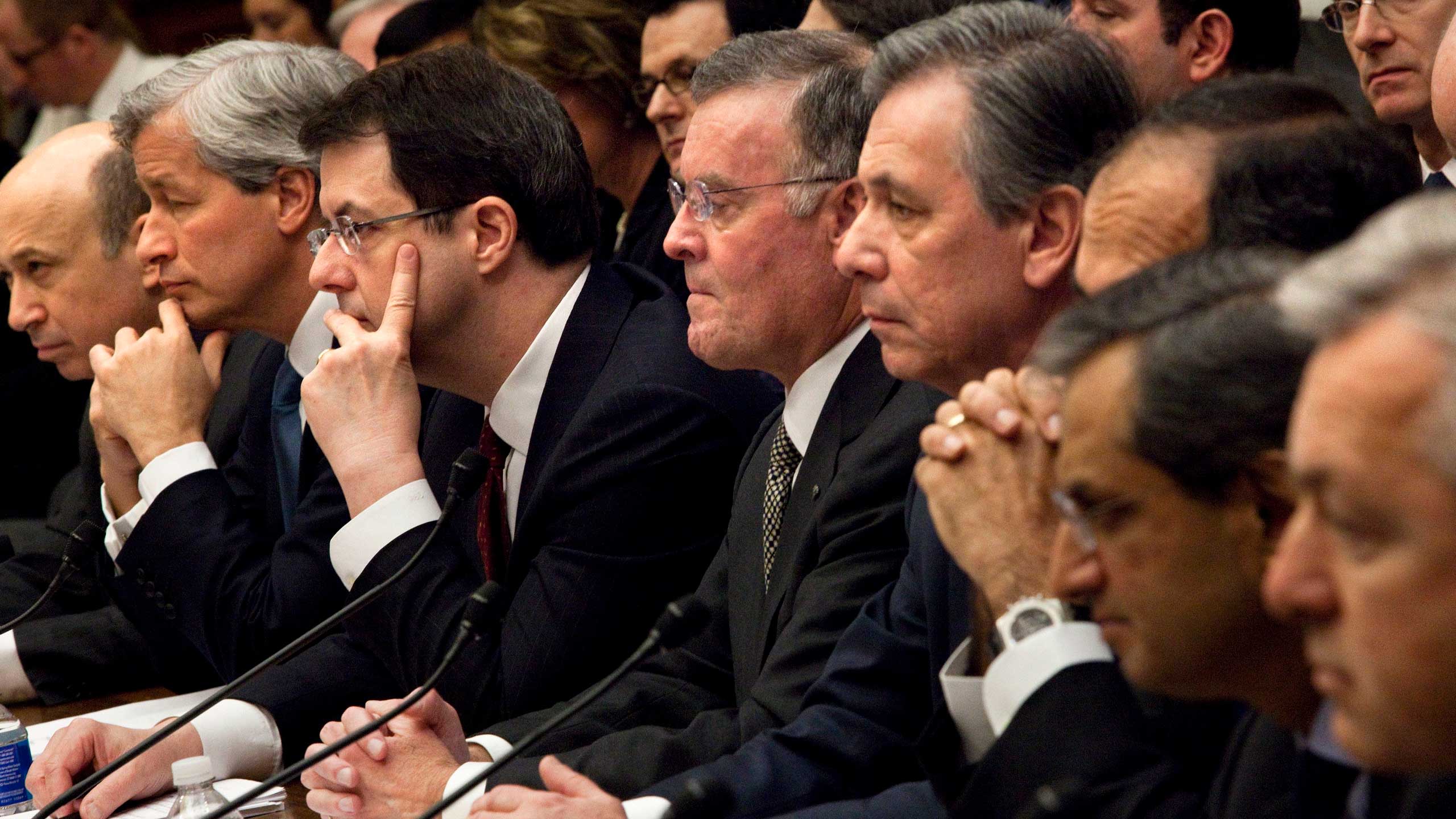
How it was
To consider how much the policymaking landscape has changed since the financial crisis, it’s worth looking back at the years before the crash.
In the late 1990s, Donald Trump was a real estate tycoon who had not yet launched his reality television show, “The Apprentice.” Elizabeth Warren was a relatively obscure Harvard professor studying bankruptcy. Sen. Bernie Sanders, a self-described socialist from Vermont, was a House member out of step with most Democrats, who wanted to be seen as pro-business.
The country’s largest banks, meanwhile, were a potent political force. After 20 years of trying, they scored a major victory in 1999 with the passage of the Gramm-Leach-Bliley Act, which formally removed the barriers separating commercial and investment banks. The legislation passed by a wide margin with a strong bipartisan vote.
There was a feeling in Washington that Wall Street could police itself, and, unshackled from unnecessary government oversight, could help the economy continue to grow and prosper.
“What you had was a Washington consensus of deregulation,” said former Rep. Barney Frank, D-Mass. The country’s largest banks “were big and well financed and generally respected in America as successful enterprises.”
And while interest groups including community banks vigorously opposed Gramm-Leach-Bliley, they didn’t stand a chance at preventing it from becoming law.
“The community banking industry did everything it could to stop that bill and they were just rolled over like a speedbump on the financial legislation highway,” said Camden Fine, the former president and chief executive of the Independent Community Bankers of America, who ran the trade association for 15 years before retiring this spring.
At the same time, Fannie Mae and Freddie Mac were powerful players on Capitol Hill, employing huge teams of lobbyists tasked with helping the government-sponsored enterprises avoid additional regulation, including higher capital requirements.
And although it’s hard to believe now, banking issues largely did not cut down party lines, instead splitting, if anything, along regional divides. Consensus was possible and often reached on major banking legislation for decades before the crisis, including with Riegle-Neal Act of 1994, which relaxed restrictions on interstate banking, and the Housing and Economic Recovery Act of 2008, which was approved the summer before the crash in an effort to head off problems in the subprime mortgage market.
But so much has changed.
As a presidential candidate, Donald Trump tapped into the same anger as the Tea Party, helping him win in certain sharply-divided states.
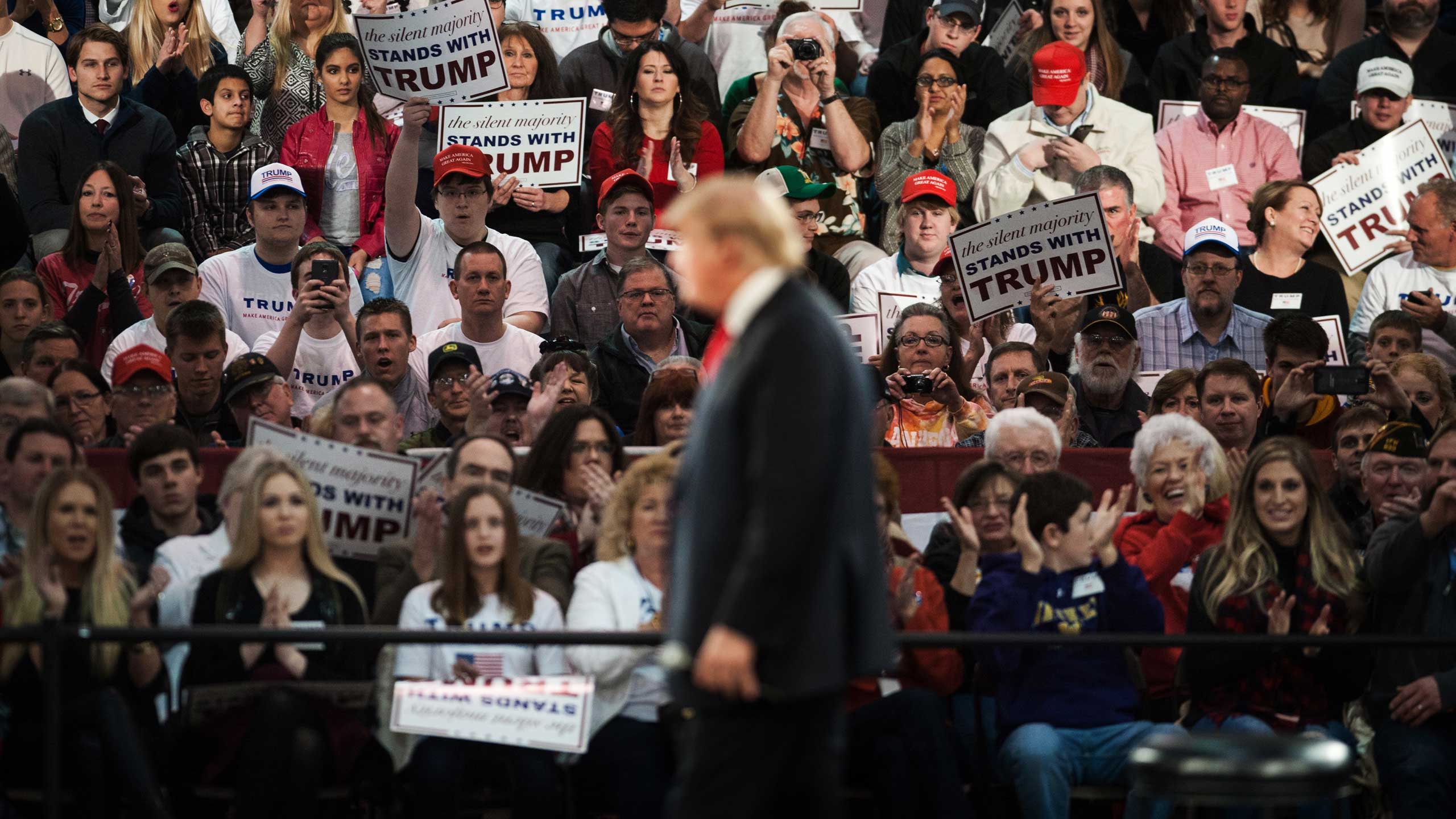
Populism
The shift began as the government leapt into action to stem the economic damage from the financial crash. For the many who felt they had not caused the situation and were helpless to stop it, the mortgage market collapse stoked anger towards big finance and big government alike.
“The financial crisis and its devastating aftermath turned millions of Americans on the left and right into angry populists,” said Larry Sabato, a professor of politics at the University of Virginia and the founder and director of the Center for Politics, which promotes civic engagement.
Enter the Tea Party and the conservative right.
Within a few months of the bank bailout, reports surfaced that the Obama administration, which had only recently taken office, planned to use some of the TARP money to help struggling homeowners. Critics on the right erupted, portraying it as a government handout. That view was embodied in a diatribe by CNBC commentator Rick Santelli, who mobilized a crowd of angry traders on the floor of the Chicago Board of Trade in February 2009.
“We’re thinking of having a Chicago tea party in July,” he said, to claps and cheers from those around him. “All you capitalists that want to show up to Lake Michigan, I’m going to start organizing it.”
It turned out to be a critical moment, crystalizing the populist anger on the right that led to the creation of the Tea Party. That wing of the GOP didn’t support the bank bailout and, to be sure, it rallied around opposition
to Obama administration initiatives like healthcare reform as well.
But anger over the bailouts remains a prominent feature, so much so that rolling back the Gramm-Leach-Bliley Act, and reinstating the Depression-era Glass-Steagall Act, became part of the GOP’s official platform in 2016.
The Tea Party targeted candidates too likely to compromise on economic and social issues, and subsequently pushed the entire party to the right. That deeply conservative energy played a critical role in helping Republicans seize the House in the 2010 midterm elections.
And even as the Tea Party brand faded, it paved the way for Trump, who tapped into the same anger against “elites” and the establishment class during his successful 2016 presidential run.
“Donald Trump would not have been elected President without the Tea Party,” Sabato said. “They knew how to organize and found a candidate in Trump who spoke to their fury and prejudices in a way [John] McCain and [Mitt] Romney could not. ‘This is our last chance to save America’ — we heard this over and over at Trump rallies and on social media. That energy propelled Trump to a slender victory in key states. Trump owes the Tea Party rebellion a great deal.”
But the bailout didn’t just change the Republicans. Democrats were also upended by it.
“Under this bill, the CEOs and the Wall Street insiders will still, with a little bit of imagination, continue to make out like bandits,” Sanders said on the Senate floor in September 2008, before voting against the TARP package.
Pelosi, Frank and other Democrats played a critical role in passing TARP. But after the bailout was enacted, many on the left grew disappointed that Obama’s programs ultimately seemed to be helping far fewer struggling homeowners than the White House had projected, all while the banking system seemed to be getting back on its feet.
That frustration could later be seen playing out in the Occupy Wall Street protests and Sanders’ own meteoric rise as a Democratic presidential candidate nearly eight years afterward.
Warren, meanwhile, launched an entire political career off her call to create the Consumer Financial Protection Bureau, which was ultimately included in the Dodd-Frank Act of 2010. That success helped spur her on to run for Senate
in 2012, where her campaign targeted problems with Wall Street. She argued that big banks had prospered while consumers were left behind.
“People feel like the system is rigged against them. And here's the painful part — they're right. The system is rigged,” she said in a milestone speech at the 2012 Democratic National Convention. “Look
around. Oil companies guzzle down billions in subsidies. Billionaires pay lower tax rates than their secretaries. Wall Street CEOs — the same ones who wrecked our economy and destroyed millions of jobs — still strut around
Congress, no shame, demanding favors, and acting like we should thank them.”
Warren focused intently on how influence is peddled in Washington, pointing to a revolving door between the banking industry and government. That view has come to embody progressives’ distrust of federal regulators and their
relationship with the financial sector.
“There’s greater skepticism of regulatory capture and misuse of power,” said Brian Knight, director of the program on financial regulation at George Mason University’s Mercatus Center.
Yet progressives like Warren and Sanders, both potential 2020 presidential candidates, aren’t alone in their sharp criticisms of the banking industry. Other rising stars of the Democratic party are still focused on the financial
crisis and its aftermath.
That includes Alexandria Ocasio-Cortez, the progressive New York candidate who shocked the establishment when she overwhelmingly defeated Rep. Joe Crowley, a senior congressman with ties to Wall Street, in the state’s Democratic
primary this summer. The 28-year-old Ocasio-Cortez worked as a waitress and bartender in college in the wake of the crash to help her mother stave off foreclosure on their family home.
Like Warren, Ocasio-Cortez campaigned on reinstating the old divisions between commercial and investment banking that Gramm-Leach-Bliley eliminated, blaming their repeal for the financial crisis. She also opposed a recently passed
regulatory relief bill, slamming Democrats who supported it. Her victory was a reminder that the crisis remains a potent issue even ten years later.
“Banks have lobbied big-[money] Democrats to champion deregulation and make it look ‘bipartisan,’” she tweeted in June. “This is corruption. Plain and simple… This is why I am running for Congress.
Because we cannot stand idly as big banks gut every last protection working families have left.”
The shift in sentiment after the bailout also flipped the political power of the banking industry. Big banks, once seen as the central drivers of the economy, became toxic.
“Beginning with TARP, they lost influence — we did a lot of things in TARP over their objections,” said Frank, pointing to compensation restrictions and other terms of the deal.
Paulson would go on to essentially force the nine largest institutions to accept capital injections under the program, despite pushback from top executives.
“They substantially lost influence over the legislative process when Lehman Brothers collapsed and the crisis hit, and they never regained it,” Frank added.
As a result, they went underground. Instead of advocating directly, they started to use community institutions “as the point of the spear on their lobbying efforts,” said Jesse Van Tol, chief executive of the National Community Reinvestment Coalition, essentially using small-bank legislation as a vehicle for large-bank provisions.
The Wall Street giants have also turned their focus to other methods, overturning Obama-era rules they don’t like in the courts as well as working the regulators. Under the Trump administration, where they are likely to get a friendlier ear, even more of the focus has turned to the bank agencies.
“The largest institutions still have influence, but it’s entirely through the regulatory process,” Frank said.
The country’s smallest banks, in contrast, have seen their political stock soar in recent years.
“As much as there was a long period of decreased bank influence [after the crisis], you also saw some shifting of influence,” Van Tol said. “The community banking lobby has become much more important.”
The regulatory relief law opposed by Ocasio-Cortez passed largely because it was marketed as a small-bank relief measure, despite containing some goodies for larger institutions.
Both Sen. Bernie Sanders (left), I-Vt., and Sen. Elizabeth Warren, D-Mass., gained in popularity on the left following the financial crisis in part because of their tough rhetoric on the large banks.
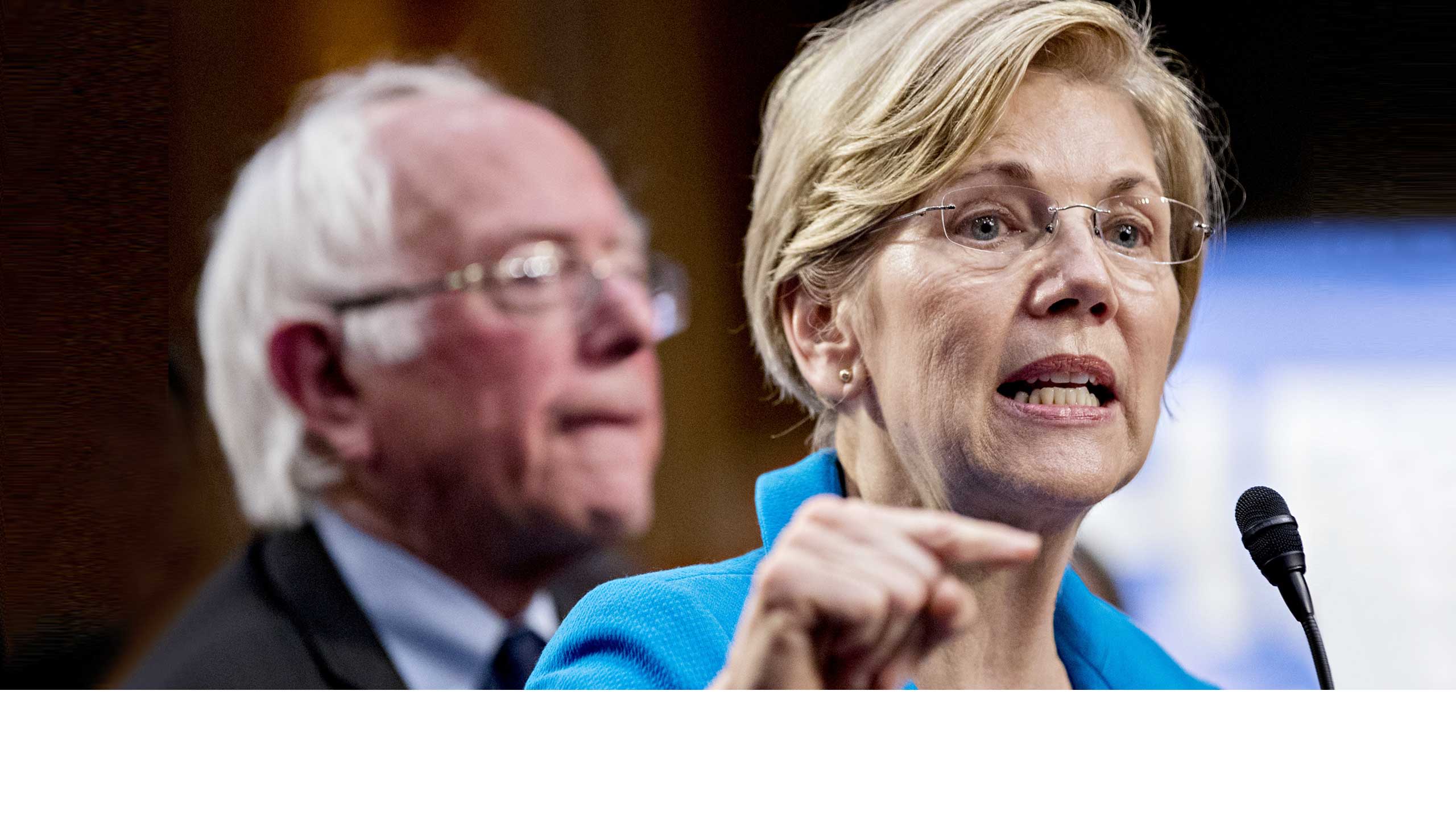
Partisanship
What’s more, the recent relief package is remarkable because it follows an intense eight-year war among the parties over Dodd-Frank’s very existence. It marks by far the most significant changes to the law since its passage.
Despite bipartisan negotiations early in the legislative process in 2009, those talks quickly broke down, leaving Democrats — who at the time held majorities in the House and Senate — to set the terms of the debate.
In the wake of the crisis, leaders in Congress and the White House wanted to move quickly on legislation to respond to the crisis and its consequences. The law ultimately garnered only a handful of Republican votes when it passed in July 2010, souring relations across the aisle.
Industry veterans are still divided as to why talks broke down — Democratic impatience or Republican obstructionism. Although Republican ideas were incorporated into the law, the fact that so few in the party supported it left Dodd-Frank as a central political battleground.
“Until quite recently, Democrats have treated Dodd-Frank like it’s holy writ and perfect, and Republicans have treated it like it’s abhorrent and absolutely wrong in every way,” said Knight.
Even after passage of regulatory relief, that fight is ongoing.
For those on the right, the legislative win this spring marks an important step forward in righting the wrongs of Dodd-Frank.
“We’ve seen a trend of overregulation — a punitive way of going about regulating — and the new administration now is trying to pull that back,” said Rep. Blaine Luetkemeyer, R-Mo., a senior member of the House Financial Services Committee who previously worked as a state bank examiner and community banker.
But on the left, the backlash to the regulatory relief bill was swift, led by Warren and others who began calling the legislation the “Bank Lobbyist Act.” That backlash will likely have consequences for future banking bills and may play a role in the midterm and presidential elections.
Moderate Democrats who supported the bill were sharply criticized by progressives, likely chilling any further outreach on banking issues in the near future.
“Senate Republicans voted unanimously for the #BankLobbyistAct. But this bill wouldn’t be on the path to becoming law without the support of these Democrats,” Warren announced on Twitter in March, as the bill cleared
the chamber. “The Senate just voted to increase the chances your money will be used to bail out big banks again.”
The divide over Dodd-Frank remains most stark when it comes to the consumer agency created under the law. Although the CFPB remains widely popular with the public, it has become a symbol of government overreach for many on the right.
“The one piece that kept us from having a bill that could stand the test of time — and not be challenged the way Dodd-Frank has been — was the consumer bureau,” said Corker. “If it had just been set up, not unlike other entities, where you had a board or commission that was appointed, and you had a rulemaking process that they had to approve, I think we would have ended up with strong bipartisan support.”
The agency, now in Republican hands, is in the midst of a complete overhaul — creating a certain amount of whiplash for banks that had feared the CFPB’s reach under Obama-appointed Richard Cordray. The Trump administration has made fast work of unraveling core functions of the bureau, halting ongoing rulemakings, reopening finalized rules and dropping court cases.
But those same forces rapidly changing the CFPB’s direction are likely to once again be in play when Democrats eventually take power. Just as the Trump administration could rapidly remake the agency, the next Democratic president may want to go further than Obama and Cordray did.
Like the law that created it, the CFPB has become a key symbol of Washington’s polarization.
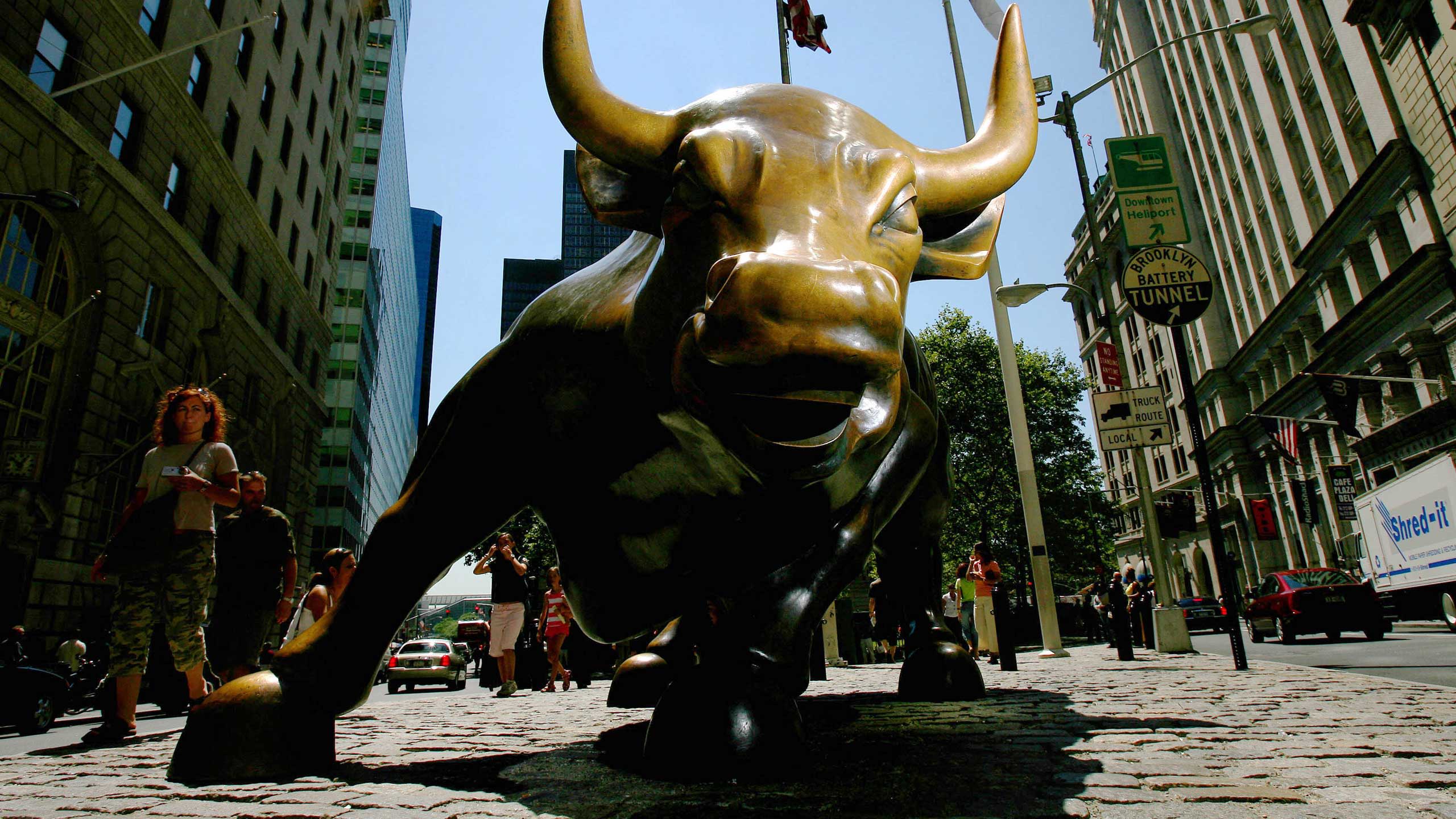
Paralysis
Yet the impact of the crisis isn’t just visible in what’s changed. It’s also apparent in what hasn’t.
The post-crisis climate has made it even more difficult to tackle sweeping reforms to the financial system. It took eight years to pass significant changes to Dodd-Frank, and those alterations were fairly modest — relative to GOP aims to repeal the law entirely — leaving most of its central tenets untouched.
For some on both the right and left, that means there’s been a failure to truly address the risks that the largest institutions pose to the financial system. While the crisis-era law arguably strengthened existing rules, it didn’t upend the industry’s structure.
“The economy was so fragile in 2009-2010, I believe policymakers said, ‘Let’s not do anything too dramatic, let’s keep the system in its basic structure and let’s just try to strengthen it,’” said Kashkari, who was also a former Treasury official under Paulson.
Although calls for reforming the biggest banks continued for years after the passage of Dodd-Frank, led by Warren, Sanders and others, the climate for addressing those concerns has further weakened. Kashkari has frequently spoken out on the problem of “too big to fail,” releasing a report earlier this year outlining ways to tackle it. He warns that critical problems remain unaddressed.
“Our analysis is that [a crisis] absolutely could happen again,” he said. “I am worried that not only have we not gone far enough to take the action that we should take, the winds are blowing against us and now there’s a tendency to try to roll [existing rules] back.”
Washington has also failed time and again over the past decade to resolve what to do with Fannie Mae and Freddie Mac, which remain in limbo under the government’s conservatorship, despite some legislative false starts in recent years. The administration has suggested that it plans to pursue the issue next year, but officials will quickly find themselves bumping up against the many political roadblocks and hurdles that have faced others before them.
“The crisis has left us in a place where it’s harder to reach consensus on the smaller issues and the broader political climate makes it difficult to tackle the big issues,” said Aaron Klein, a fellow at the Brookings Institution and former Obama Treasury official.
There is a tendency to believe that the U.S. has always been this politically divided. But with a few notable exceptions, research says that’s not the case.
“The divisions between Republicans and Democrats on fundamental political values — on government, race, immigration, national security, environmental protection and other areas — reached record levels during Barack Obama’s presidency,” concluded the Pew Research Center last fall, after studying this divide since 1994. “In Donald Trump’s first year as president, these gaps have grown even larger.”
This trend is also reflected throughout history.
Such polarization is both “common and predictable” following a financial crisis, wrote Amir Sufi, an economist at the University of Chicago in a 2016 essay, based on his study of historical trends with researchers from Princeton and the University of British Columbia.
“Not surprisingly, we find, after almost any financial crisis, ruling governments became substantially weaker, while opposition coalitions grew stronger,” he added. “This increased overall political partisanship and fragmentation, often leading to gridlock and ineffectual policy making, just when bold moves and major financial reforms might have been particularly beneficial.”
Here in the U.S., what started as an economic crisis has become a political one — and there is no one to beg for a bailout this time around.
“That was a symptom of the crisis,” said Fine. “It just set up a very partisan divide, and we’re still living with it.”
Graphics: American Banker
Photos: Bloomberg News


